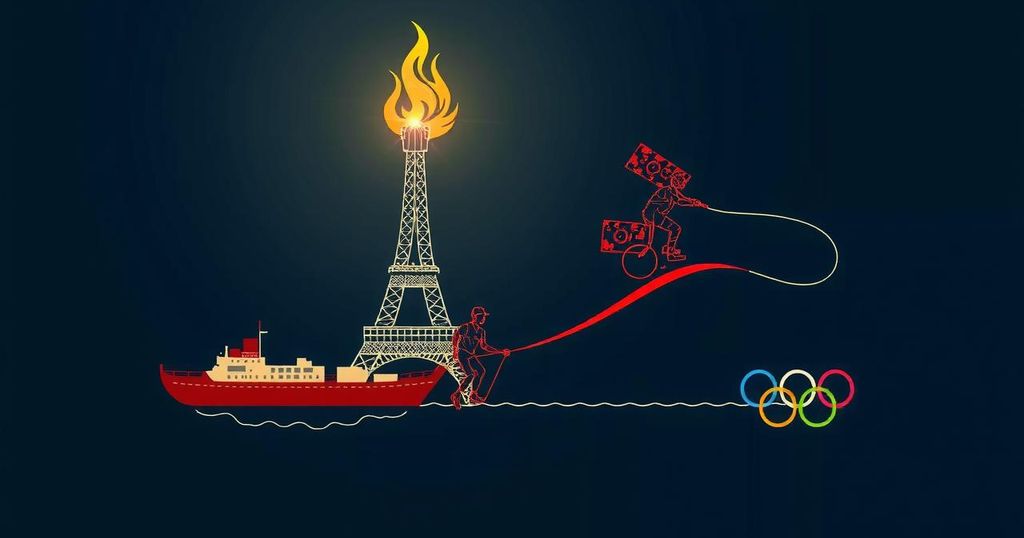The Exceptional Journey of the Paralympic Flame: From Stoke Mandeville to Paris
The prestigious journey of the Paralympic flame is poised to begin, following the conclusion of the Paris Olympics two weeks prior when renowned French swimmer Léon Marchand extinguished the Olympic flame. The Paralympic flame will be ignited on Saturday in Stoke Mandeville, a village located northwest of London, which is acknowledged as the birthplace of the Paralympic Games.
Upon its ignition, the flame will embark on an extraordinary odyssey under the English Channel, traversing France over a span of four days. It will journey from the shores of the Atlantic Ocean to the sunlit beaches of the Mediterranean, scaling the majestic Pyrenees mountains and the enchanting Alps. Its aspiration is to culminate in Paris on Wednesday, coinciding with the opening ceremony of the Paralympics, where a unique Olympic cauldron will be set ablaze. This cauldron, attached to a hot-air balloon, will ascend over the French capital each evening throughout the eleven days of competition.
The ceremony to light the Paralympic Heritage Flame takes place in Buckinghamshire, where the inaugural Stoke Mandeville Games commenced in 1948, offering a platform for a select group of wheelchair athletes who had suffered spinal injuries during World War II. The visionary behind this transformative initiative was Ludwig Guttmann, a Jewish neurosurgeon who, having fled Nazi Germany, spearheaded innovative therapeutic practices at the Stoke Mandeville hospital. His commitment to encouraging patients to sit up and engage in physical activity fostered a competitive spirit, ultimately leading to the first Paralympic Games held in Rome in 1960. The Heritage Flame ceremony was initially conducted prior to the London Paralympics in 2012.
The flame’s transition across the Channel will mirror its Olympic counterpart, which made its journey from Greece to France in May, albeit through the Channel Tunnel for this event. Here, 24 British athletes will carry the flame underwater through the 50-kilometer-long tunnel, before it is gracefully passed to 24 French athletes awaiting its arrival in Calais. This flame will ignite 12 individual torches, symbolizing the eleven days of spirited competition and the opening ceremony.
Upon reaching French territory, the flame will be dispersed into 12 separate torches, igniting enthusiasm for the ongoing celebrations of the Paris Olympics. A diverse group of 1,000 torchbearers—including former Paralympians, budding para-athletes, dedicated volunteers from various Paralympic organizations, advocates of advanced technological support, as well as individuals committed to various non-profit functions supporting persons with impairments—will carry the flame across 50 cities in France, fostering a spirit of inclusion and elevating awareness surrounding the experiences of individuals with disabilities.
Additionally, a monumental flame will be ignited in Paris on Sunday, commemorating the 80th anniversary of the city’s liberation from Nazi occupation during World War II.
The relay route will not only highlight essential locations committed to the advancement of para-sports but will also honor the hometowns of celebrated Paralympians, such as Lorient, the birthplace of two-time Paralympic gold medalist in sailing, Damien Seguin, and Blois, which features a sports complex named after Marie-Amélie Le Fur, a renowned Paralympic track athlete with an impressive collection of nine medals, including two golds from the Rio Games.
Furthermore, locations such as Châlons-en-Champagne—housing France’s sole gym designed to accommodate athletes with intellectual disabilities—will be part of this noble relay, along with Rouen, Chartres, and Troyes that foster a variety of para sports disciplines from sledge hockey to adapted baseball and para climbing. Additionally, Chambly will be highlighted for its extensive facilities tailored for para sports.
The grand finale will occur in central Paris on Wednesday, when the twelve flames converge once again, commemorating their journey through renowned historical sites before lighting the cauldron during an extravagant three-hour opening ceremony. Notably, this cauldron marks a historic first in Olympic tradition, utilizing neither fossil fuels nor conventional lighting methods—instead, it employs water and electric illumination while being attached to a balloon. It made a breathtaking debut during the Olympic commencement ceremony.
Throughout the duration of the Paralympics, the cauldron will rise majestically more than 60 meters above the Tuileries Gardens, illuminating the night sky from sunset until 2 a.m., thus embodying the spirit and resilience of the Games.








Post Comment